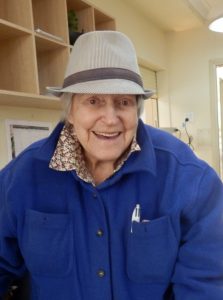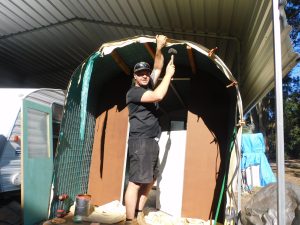How often have we sat in meetings to discuss the dilemma of the growing number of homeless people who we meet in our daily lives? The problem is massive on government, communal and individual levels. However, in line with the parable of the Good Samaritan, we stop, listen, think, and try to act creatively and with compassion, writes Good Samaritan Sister Diana Law.
Thanks to the many supermarkets and companies that donate fresh food, groceries and essential supplies, it is possible to provide people in need with food parcels and items such as second-hand clothes, blankets, and even tents. We may be able to offer temporary accommodation in a motel or private home.
All this is wonderful, especially when it is provided with a loving concern that pours oil into the wounds of fear, insecurity and abandonment, which underpins homelessness.
But what happens when cyclonic winds and torrential rain flattens the tent or when it is raided by other people, or animals? How long can temporary accommodation be sustained?

Good Samaritan Sister Pauline Fitz-Walter. Image: Sisters of the Good Samaritan.
All these questions with their concomitant soul-searching were asked by Good Samaritan Sister Pauline Fitz-Walter, who struggled with the dilemma of homelessness from the late 1970s.
In 1981, the findings of the Richmond Report led to the eventual closure of long-term institutional care in psychiatric hospitals and to the absorption of long-term patients into society.
Idealistically, this sounded as though Australia was emerging from its draconian treatment of people suffering from mental illness. However, submerged in this apparent idealism and care was the lurking reality of economic gain.
It was considered financially advantageous for the government to firstly restrict beds and finally to close long-term psychiatric hospitals completely and to invest this money into an infrastructure that would enable mentally ill people to survive in society.
However, it took more than 10 years for a glimpse of such infrastructure to trickle down to the mentally ill, homeless people to whom Pauline and two other Good Samaritan Sisters dedicated their time and energy.
It was not until Brian Burdekin, Federal Human Rights Commissioner (1986-94), launched a National Inquiry into the Human Rights of People with Mental Illness, resulting in the Burdekin Report (1989), that awareness spread about the tragic consequences of neglected infrastructure, which caused a national lack of care for these people.
The findings and recommendations initiated responses from government and NGOs, which still ripple throughout Australia, but the contemporary, socio-economic conditions exacerbate the ongoing problems of imbalance between ‘supply and demand’ of adequate social housing.
Little could Sister Pauline know that nearly 50 years later, her eldest nephew, Tony Vetter, a Good Samaritan Oblate and Partner in Ministry, would address the same problems and search for a new way to channel his energy.
Tony is an advocate for structural change that will bring some relief to the increasing number of homeless people suffering from debilitating social, physical, spiritual and mental conditions.
When people approached him for help, Tony knew they needed food and shelter and compassionate care, which provides a ‘bridge over troubled waters’ and gives a glimmer of hope. However, he was angered by the systemic injustice that traps people in this quagmire of hopelessness and homelessness.

The small, transportable huts can be built economically to provide shelter. Image supplied.
With the encouragement of some Good Samaritan Sisters and Oblates, Tony decided to use his carpentry skills and, taking inspiration from the American Conestoga Wagons, he designed and constructed a small, transportable hut, which could be built economically to provide shelter and lockable security. A $10,000 grant from the Religious of Queensland Social Justice Grants program enabled him to purchase a trailer to transport the huts.
Using this ‘Good Sam Hut’ as an inspirational model, Tony encourages contacts with local councils, including the Cherbourg Aboriginal Shire Council, MPs, business organisations, Men’s Sheds, and charitable organisations committed to finding solutions to the growing problem of the national accommodation shortage.
It may seem like a drop in the ocean, but at 80 years of age Tony helps us to know the power of people who face problems creatively and, through the synergistic effects of interconnected wisdom and energy, work with others towards the ‘Common Good’.
Tony believes that every person can be a catalyst for change in an economic system that is weighted towards profit making rather than compassionate care.
The huts are ideal in problematic family situations or in council facilities where bathroom amenities are available. For more information, please leave a voice-to-text message tel 0431 54 67 88 or email Tony Vetter at: tonyvet543@gmail.com.
